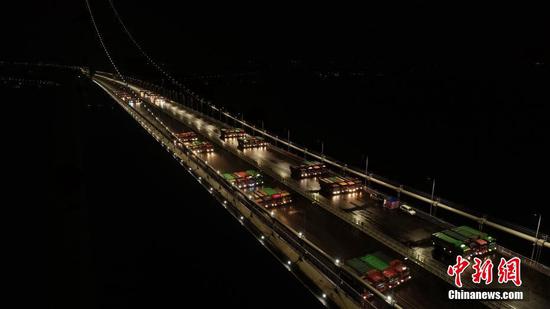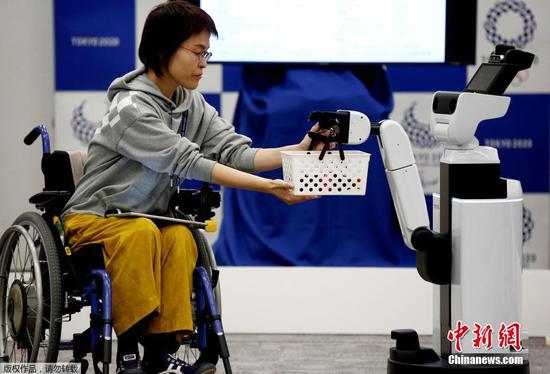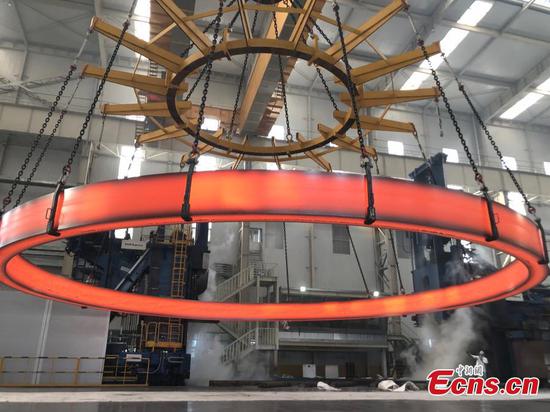
Artist's depiction of the drone. (Photo provided to China Daily)
China Aerospace Science and Industry Corp, a major space contractor, is experimenting with solar-powered drone technology that will eventually become a vast network facilitating emergency communications and ground observation, according to a project leader.
Zhang Hongwen, president of the CASIC Third Academy in Beijing, said his academy has made "satisfactory advances" in the Feiyun program, which aims to build a solar-powered drone-based network capable of providing long-term telecommunications as well as internet and ground observation services from near space.
He said the academy carried out more than 100 test flights of its solar-powered unmanned aircraft in 2018 and determined the drone's design as well as the capabilities of equipment mounted on the drone during the flights.
"Next we will begin tests on the drone's application in maritime emergency communications as the first step in the Feiyun program's large-scale trial run. And we will continue optimizing the program's overall plan as well as its capability and reliability," the senior researcher said. "Over three years starting from 2020, we intend to form a drone network to display and promote its use in remote sensing and telecommunications."
Meng Fanyuan, chief designer of the Feiyun system at the academy, said that the solar-powered drone has a traditional aircraft design and is made of ultralight composite materials. It is able to undertake several tasks traditionally performed by satellites, but at a much lower cost, he noted.
When carrying internet-connected devices, the drone-based network will be able to link users in remote, mountainous areas and small islands via the internet, and can also provide telephonic services, he said.
Upon Feiyun's completion, the system will be able to maintain at least one week of emergency communication services in case of failure in ground-based communications, according to the designer.
Near space refers to the region of the Earth's atmosphere between 20 and 100 kilometers above sea level, encompassing the stratosphere, mesosphere and the lower thermosphere. It is located in altitudes above where commercial airliners fly, but below orbiting satellites.
Experts said near space is suitable for solar-powered drones because there are no clouds at an altitude of 20 km or higher, and the airflow there is stable so drones can fully use their solar cells to generate power. As long as the solar power system works well, the aircraft can theoretically stay airborne as long as the controllers wish.


















































